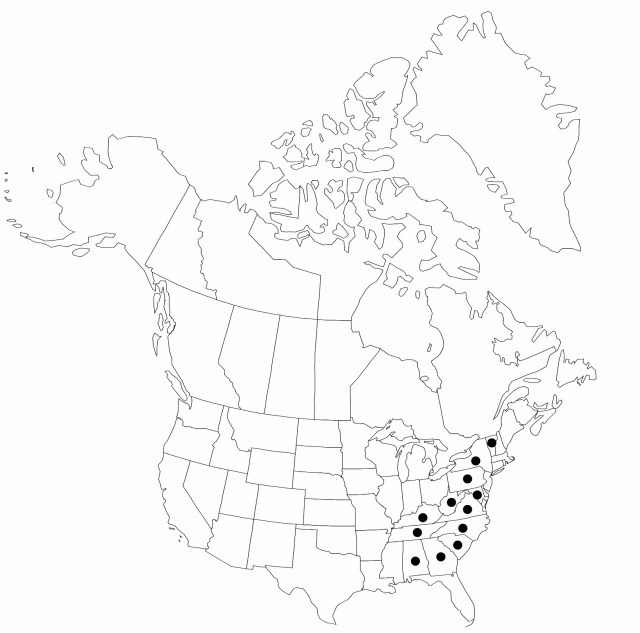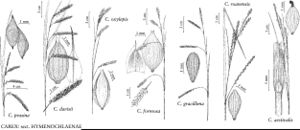Carex aestivalis
Amer. J. Sci. Arts 42: 28. 1842.
Plants densely cespitose. Culms dark maroon at base; flowering-stems 25–60 cm, usually longer than leaves at maturity, 0.5–0.7 mm thick, glabrous or sparsely pubescent, finely scabrous within inflorescence. Leaves: basal sheaths maroon, bladeless, pubescent; others grading from maroon to green on back, pale brown-hyaline, red dotted and usually pubescent on front; blades flat, 1.5–3 mm wide, glabrous or sparsely pubescent on both surfaces, especially near sheath, finely scabrous on margins. Inflorescences: peduncles of lateraal spikes 5–25 mm, shorter than spikes, glabrous; peduncle of terminal spike 5–25 mm, glabrous; proximal bracts often equaling or exceeding inflorescences; sheaths to 9 mm; blades 1–2 mm wide. Lateral spikes 2–4, 1 per node, well separated, erect or arching, pistillate with 15–30 perigynia attached 1 mm apart distally and 3 mm apart proximally, linear, 15–50 × 3–3.5 mm. Terminal spike gynecandrous, 20–35 × 1.5–3.5 mm. Pistillate scales pale hyaline, tinged with golden or reddish-brown, with broad green midrib, red dotted, oblongelliptic, shorter than mature perigynia, apex obtuse to cuspidate, glabrous. Perigynia green, copiously red dotted, 2-ribbed and finely 12–15-veined, loosely enveloping achene, ovoid-ellipsoid, 2–3.2 × 0.8–1 mm, membranous, base with short stipe, gradually tapering to acute beakless apex, glabrous. Achenes distinctly stipitate, 1.8–2.1 × 0.8–1 mm, stipe 0.5 mm. 2n = 56.
Phenology: Fruiting summer.
Habitat: Dry to mesic forests, seepage slopes, and meadows in the mountains
Elevation: 0–1600 m
Distribution

Ala., Ga., Ky., Md., N.Y., N.C., Pa., S.C., Tenn., Vt., Va., W.Va.
Discussion
Variants of Carex aestivalis with larger perigynia have been collected from Virginia and North Carolina. Carex aestivalis apparently hybridizes with C. gracillima and C. virescens.
Selected References
None.
Lower Taxa
"shortened" is not a number."thick" is not a number.
